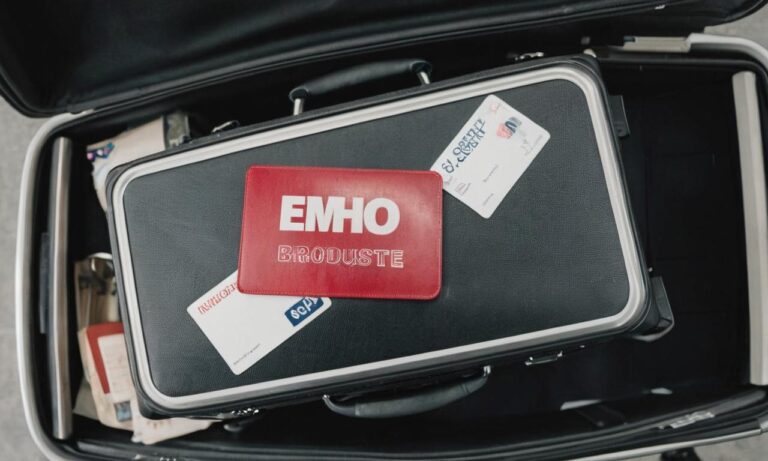Understanding the dimensions and regulations for carry-on luggage is crucial for a hassle-free travel experience. Airlines have specific size restrictions for suitcases that passengers can bring into the cabin, varying slightly among carriers. Let’s delve into the specifics to ensure you’re well-prepared for your next journey.
Standard Dimensions
Generally, the typical dimensions for a carry-on suitcase fall within the range of 22 x 14 x 9 inches (56 x 36 x 23 centimeters). However, these measurements can differ depending on the airline. Some airlines may allow slightly larger or smaller dimensions, so it’s prudent to check your carrier’s guidelines before packing.
Checking Airline Policies
Each airline establishes its own regulations regarding the size and weight of carry-on luggage. Some may permit larger suitcases in terms of dimensions, while others may impose stricter limitations. It’s advisable to visit the airline’s official website or contact their customer service to confirm the specific requirements for your upcoming flight.
Additional Considerations
Aside from size, weight restrictions also play a pivotal role. Even if your suitcase fits the specified dimensions, exceeding the weight limit may result in additional charges or the need to check in the bag. Most airlines restrict carry-on bags to around 15 to 22 pounds (7 to 10 kilograms), but this can vary.
Special Cases and Exceptions
Some airlines offer flexibility for certain items such as garment bags, small musical instruments, or medical equipment. These items may be allowed as supplementary carry-ons or granted exceptions to standard size limitations. Familiarizing yourself with such exceptions can be beneficial for a smoother travel experience.
Packing Tips
To maximize space within the prescribed dimensions, consider efficient packing techniques. Utilize compression bags, packing cubes, and roll clothes instead of folding to optimize space. Additionally, packing only essential items helps prevent exceeding weight restrictions.
Benefits of Compliance
Adhering to airline regulations ensures a stress-free boarding process. Carrying a compliant-sized suitcase facilitates quicker security checks and avoids the inconvenience of having to check in or rearrange luggage at the airport.
Final Verdict
While the standard dimensions for a carry-on suitcase hover around 22 x 14 x 9 inches, it’s critical to verify the specific requirements of your chosen airline. Being well-informed about size restrictions, weight limits, and any exceptions allows you to pack efficiently and navigate airport procedures seamlessly.
Frequently Asked Questions
Understanding the regulations and dimensions for carry-on luggage is crucial for a hassle-free travel experience. Here are some common queries:
| Question | Answer |
|---|---|
| Are there universal carry-on size restrictions? | No, size restrictions vary among airlines. It’s essential to check with your specific carrier. |
| Can I bring a slightly oversized suitcase? | Some airlines might allow a marginally larger or smaller suitcase, but it’s best to adhere to their specified dimensions. |
| What happens if my carry-on exceeds the weight limit? | Exceeding weight limits can result in additional charges or the need to check in the bag. |
| Are there exceptions for special items? | Some airlines may offer flexibility for certain items like garment bags, small instruments, or medical equipment. Check the airline’s policy for details. |
| Why is it important to comply with these regulations? | Adhering to airline regulations ensures a smoother boarding process, quicker security checks, and prevents inconveniences at the airport. |
Standard Dimensions Overview
Generally, the typical dimensions for a carry-on suitcase fall within the range of 22 x 14 x 9 inches (56 x 36 x 23 centimeters). However, these measurements can differ depending on the airline. Some airlines may allow slightly larger or smaller dimensions, so it’s prudent to check your carrier’s guidelines before packing.
Checking Airline Policies
Each airline establishes its own regulations regarding the size and weight of carry-on luggage. Some may permit larger suitcases in terms of dimensions, while others may impose stricter limitations. It’s advisable to visit the airline’s official website or contact their customer service to confirm the specific requirements for your upcoming flight.
Additional Considerations
Besides size, weight restrictions also play a pivotal role. Even if your suitcase fits the specified dimensions, exceeding the weight limit may result in additional charges or the need to check in the bag. Most airlines restrict carry-on bags to around 15 to 22 pounds (7 to 10 kilograms), but this can vary.
Special Cases and Exceptions
Some airlines offer flexibility for certain items such as garment bags, small musical instruments, or medical equipment. These items may be allowed as supplementary carry-ons or granted exceptions to standard size limitations. Familiarizing yourself with such exceptions can be beneficial for a smoother travel experience.
Packing Tips
To maximize space within the prescribed dimensions, consider efficient packing techniques. Utilize compression bags, packing cubes, and roll clothes instead of folding to optimize space. Additionally, packing only essential items helps prevent exceeding weight restrictions.
Benefits of Compliance
Adhering to airline regulations ensures a stress-free boarding process. Carrying a compliant-sized suitcase facilitates quicker security checks and avoids the inconvenience of having to check in or rearrange luggage at the airport.
Final Verdict
While the standard dimensions for a carry-on suitcase hover around 22 x 14 x 9 inches, it’s critical to verify the specific requirements of your chosen airline. Being well-informed about size restrictions, weight limits, and any exceptions allows you to pack efficiently and navigate airport procedures seamlessly.






